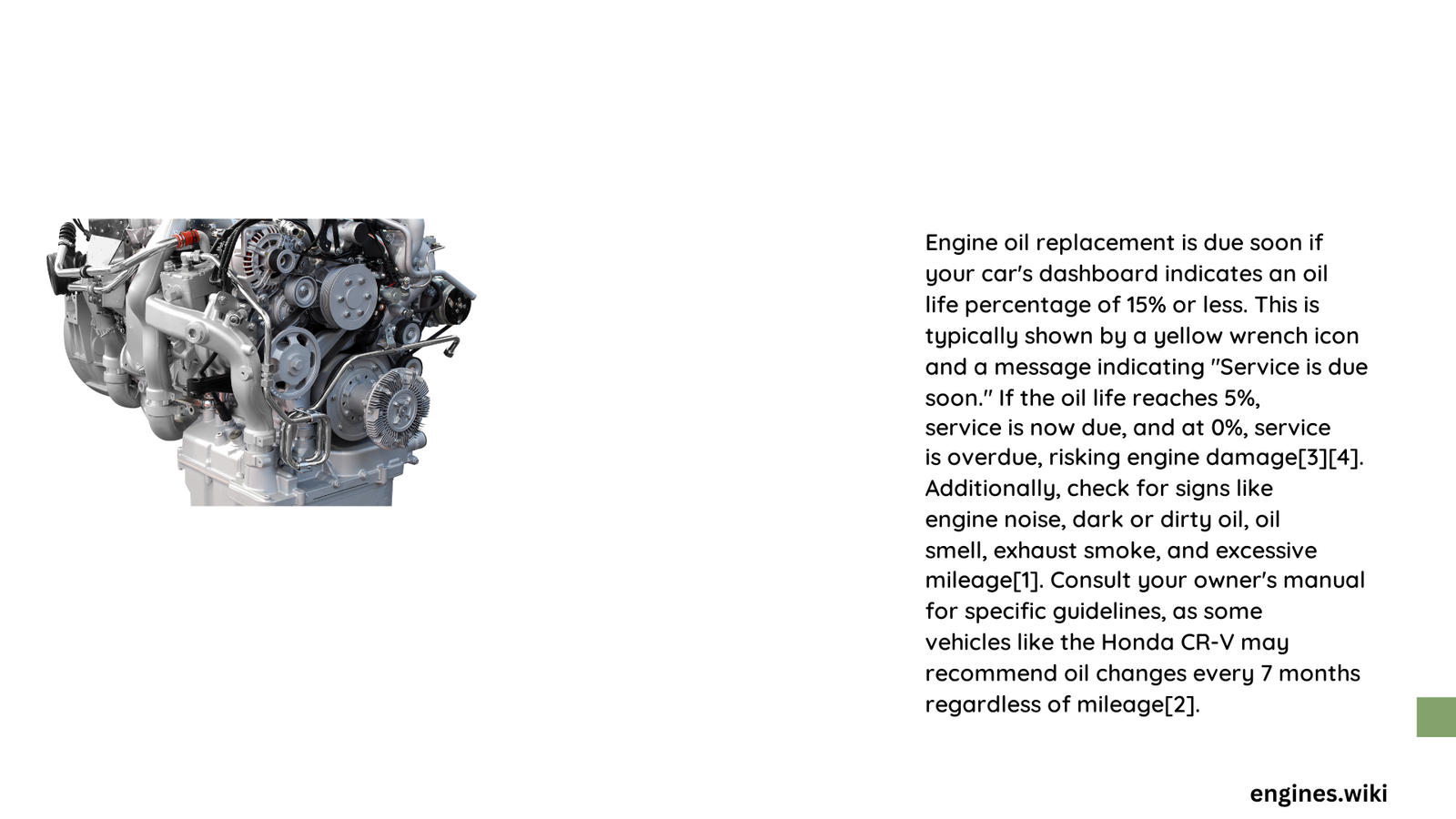Engine oil replacement is a critical maintenance task that ensures your vehicle’s longevity and optimal performance. Neglecting timely oil changes can lead to significant engine damage, reduced fuel efficiency, and costly repairs. Understanding the right time and method for engine oil replacement is crucial for every vehicle owner.
What Are the Standard Oil Change Intervals?
Vehicle manufacturers typically recommend different oil change schedules based on several factors:
| Oil Type | Recommended Interval | Driving Conditions |
|---|---|---|
| Conventional Oil | 5,000 miles / 6 months | Normal driving |
| Synthetic Blend | 7,500 miles / 6-12 months | Moderate driving |
| Full Synthetic | 10,000-15,000 miles | High-performance engines |
Why Do Oil Change Intervals Vary?
Several key factors influence oil change frequency:
- Vehicle Make and Model
- Newer vehicles often have extended oil change intervals
-
Luxury and high-performance vehicles might require more frequent changes
-
Driving Environment
- Urban stop-and-go traffic increases wear
- Extreme temperatures impact oil breakdown
- Dusty or harsh conditions accelerate oil degradation
How Can You Detect When Oil Replacement Is Due?

Visual Inspection Techniques
- Check Oil Color: Fresh oil appears amber, while dirty oil looks dark brown or black
- Consistency Test: Rub oil between fingers – gritty texture indicates contamination
- Dipstick Examination: Ensure oil level remains between minimum and maximum marks
Warning Signs of Urgent Oil Replacement
🚨 Critical indicators include:
– Engine knocking or ticking sounds
– Decreased fuel efficiency
– Dark, dirty oil appearance
– Illuminated oil pressure warning light
– Burning oil smell
What Happens If You Delay Oil Replacement?
Postponing oil changes can cause:
– Increased engine wear
– Reduced lubrication
– Higher friction between moving parts
– Potential engine seizure
– Expensive mechanical repairs
Recommended Maintenance Schedule
Proactive Oil Change Strategy:
– Follow manufacturer’s recommended intervals
– Consider your specific driving conditions
– Use high-quality oil matching vehicle specifications
– Replace oil filter during each change
– Maintain consistent maintenance records
How to Perform a Proper Oil Change?
Step-by-Step Process
- Gather necessary tools and materials
- Warm up the engine slightly
- Lift vehicle using jack stands
- Drain old oil completely
- Replace oil filter
- Add recommended oil quantity
- Check oil level and quality
- Dispose of old oil responsibly
Cost Considerations
Average oil change costs range:
– Conventional Oil: $35-$75
– Synthetic Blend: $50-$100
– Full Synthetic: $75-$125
Pro Tip: Many service centers offer maintenance packages that can reduce overall costs.
Final Recommendations
- Always consult your vehicle’s owner manual
- Track mileage and time since last oil change
- Use high-quality oil appropriate for your vehicle
- Consider professional service for complex vehicles
Reference:
– AAA Automotive Oil Change Guide
– Kelley Blue Book Maintenance Tips
– Automotive Maintenance Standards
